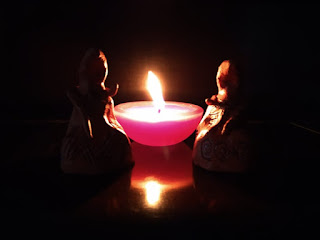The Warka Head As One Of Four Cult Masks of Inanna

The Warka Head As One Of Four Cult Masks Of Inanna Deepta Roy Chakraverti I propose that in the Uruk period which knew Inanna (Inana) by four names ( from the Uruk tablets), a cultic worship existed where each form of the goddess was shown with a different face or mask. The main body of the deity was kept the same, but the faces and adornments were varied. Thus, the Uruk tablets have brought to light four forms, and each , I propose with a different face. I suggest the Warka mask is one of four and three others wait to be found in Uruk. Introduction The mysterious marble mask which goes back 5000 years, is no ordinary carved head. Recovered during excavations in what is modern day Warka, Iraq ,by German archaeologists, this enigmatic sculpture is the oldest depiction of the human face. It was found in the ruins of the temple precincts of the goddess Inanna and is thought to depict the goddess herself. Researchers say that at one time, this mask ...



